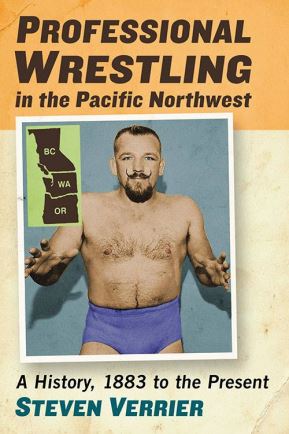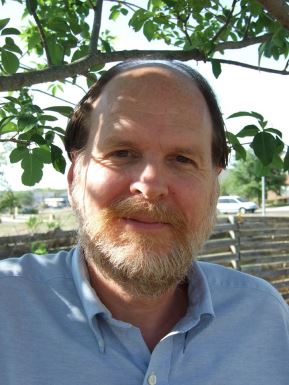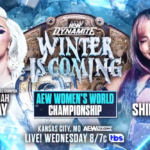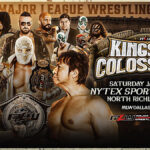Steve Verrier, author of the comprehensive Professional Wrestling in the Pacific Northwest A History, 1883 to the Present, took the time out of his schedule working on his next book — Canada’s Greatest Athlete! — to answer some questions from SLAM! Wrestling (to which he occasionally contributes).
SLAM! Wrestling: How difficult was it balancing the different eras covered in your book and ensuring that you devoted enough time to each of them? Which era was the most challenging to research and is there an era you would like to go back and write about more in the future?
STEVE VERRIER: Over time I got a sense of which promotions, which events and which figures I needed to give particular focus to. From there I determined which others at least had to be mentioned or identified. Then it was mainly a matter of presenting all of those in the context of the bigger picture — wrestling-wise and otherwise — in the Northwest and beyond the Northwest.
I wanted this book to speak to more than a hardcore wrestling audience, so I tried not to go too far into areas that would interest only a handful of people. There were a lot of names, details, and so forth, that I could have added but I don’t think I overlooked anyone or anything that had to be in such a narrative covering the entire history of wrestling in the Pacific Northwest in a single book.

The most challenging era for me was probably the current one. I’ve lived in the Northwest only a few years and when I started working on the book I didn’t know a great deal about wrestling events in this region following the demise of the long-lived promotions in Vancouver and Portland in the late 1980s and early 1990s. People I quote in the book, along with a few others, were an enormous help in filling me in concerning the last three decades of wrestling in the Pacific Northwest.
There’s plenty I could enjoy researching and writing about in greater detail — particularly, pertaining to some of the largely forgotten activity in the Northwest by figures who became well known elsewhere for their accomplishments in wrestling. Such a list would include names like Jack Curley, Jim Londos, Paul Boesch and others. On top of that, there are dozens of outstanding personalities in the history of Northwest wrestling — wrestlers and promoters — who are well deserving of serious biographies.
SLAM! Wrestling: As mentioned in your book, during the early 20th century Bellingham, Washington, became ‘the hub of a wrestling circuit’. Can you give some further details as to what led up to Bellingham becoming such a prominent wrestling city in the Pacific Northwest during this period, hosting several significant bouts and what led to its decline later on? What made Bellingham so attractive to promoters and wrestlers during this period?
STEVE VERRIER: The Farmer Burns-Frank Gotch-Joe Carroll camp in the Midwest was responsible for making Bellingham the centre of attention it was in the wrestling world for a brief period in the early 20th century. Burns and his associates had a history of picking out a location, running wrestling events there for a time and then when they figured it would be more profitable to move on, they’d go and do it all over again in another location. Bellingham was a growing town in the early 1900s. It didn’t have a history of wrestling and it was close to Vancouver, which was really coming into its own as a major centre on the West Coast, though it didn’t have a history of professional wrestling either until it became the big-money stop on the Bellingham circuit.
Though some wrestlers from the Midwest and elsewhere stuck around the Bellingham area and wrestling events continued to take place there afterward, Bellingham wasn’t on the big stage for long. Burns, Gotch and most of the others moved on after just a year or two and Gotch became the biggest wrestling attraction in the United States. An interesting side note is that Emil Klank, a key member of the Burns-Gotch camp and another big name in Bellingham, later became the main promoter in Vancouver.
Without a doubt, the story of Bellingham in the early 1900s is one of wrestling’s better-kept secrets — and not many people in Bellingham are aware of events of that time either. I spent the better part of a year in Bellingham when I moved to the Northwest four years ago and while I was there I never heard a word about Frank Gotch or Bellingham’s part in wrestling history over a century earlier.

Steve Verrier.
SLAM! Wrestling: In reading chapter 2 there seemed to be hints to a great deal more behind Herb Owen’s rise as a promoter in Oregon in the late 1920s. What was your personal opinion of him based on your research and is he a figure that you would like to revisit in more detail in a future book?
STEVE VERRIER: I think he was an ambitious man who was set on creating some kind of dynasty. There seem to be a lot of assumptions about him and I’m not sure all of them are fair.
Herb Owen was connected with the Virgil Hamlin-Ted Thye promotion that was already established in Oregon when Owen got into wrestling promotion. If, as the stories go, he managed to pull a fast one and register the company in his own name in the early 1930s when Thye was away in Australia, you have to wonder why Thye and Hamlin hadn’t taken sufficient precaution to ensure that sort of thing couldn’t happen. You have to wonder, too, why Owen’s action was recognized by the powers that be in Oregon. To tell the truth, I didn’t come across a lot of contemporaneous material that was much more than hearsay. If any documents still exist that establish clearly just how Herb Owen maneuvered his way to becoming the head wrestling promoter in Oregon, I would love to see them.
SLAM! Wrestling: Under the direction of Percy Hicks, the Big Time Wrestling promotion in British Columbia seemed to have a very turbulent number of years from 1937 to the late 1940s and his battles with rival promotions the Vancouver Wrestling Club and the Pender Wrestling Club resembled on a smaller scale some of the promotional battles between WWE and its competitors in the 1980s and the 1990s. Would that be an accurate assessment and how far did the competition between those promotions go during that earlier era?
VERRIER: That’s an interesting analogy. From the early days of wrestling, a lot of promoters have been happy to engage in a little underhandedness to get a leg up. I remember attending a show in Ontario when I was a teenager and getting the lowdown on why I shouldn’t waste my money attending shows run by an opposition promotion in the same city. Trying to sabotage the opposition wasn’t at all rare. There are plenty of stories about wrestlers attending opposition shows to stir up trouble, information getting handed out by one promotion to fans waiting in line to see another promotion’s show or wrestlers hired away from the opposition to come in and lose and make the competition look bad. It’s all been done many times and Vancouver during that era was no different.
SLAM! Wrestling: Can you talk a bit about what was behind the ban on women’s wrestling in the state of Oregon starting in 1945 and lasting for over 30 years and what led to that ban finally being rescinded?
VERRIER: I’d say it was a matter of discrimination and custom and not much more. Oregon wasn’t the only place hit with such a ban. There were restrictions or bans at various times on women’s wrestling in other states including New York and California and in parts of Canada. As far as Oregon went, it was a legislature dominated by males that passed the ban, apparently thinking wrestling ought to be preserved as a manly sport. I know the ban was challenged all the way to the state Supreme Court but in many ways Oregon, even during the Civil Rights era, wasn’t exactly the progressive place it’s generally seen to be now. Change came slowly in a lot of areas and it wasn’t until much later than you’d think that women were allowed back in Oregon rings.
SLAM! Wrestling: How influential was Lou Thesz’ wrestling in Washington state during the mid-1940s and how did it impact wrestling in the Pacific Northwest going forward?
VERRIER: Thesz was still shy of 30 when the U.S. Army stationed him near Tacoma near the end of WWII and for a short while afterward. Given that he hadn’t really made a big name in the Northwest prior to that and wrestled only a few dozen matches in the Northwest in 1945, I’d say he didn’t have nearly the impact in the region that, say, Gorgeous George did. Thesz’ real impact in places like Seattle and Portland didn’t kick in until he started coming through to defend the NWA world title in the 1950s.
SLAM! Wrestling: Was there any indication as to why promoter Don Owen’s application to join the National Wrestling Alliance was accepted in 1951 and why rival promoter Ted Thye’s application was rejected? For professional wrestling in the Pacific Northwest, was this in many ways one of most significant turning points?
VERRIER: Thye had a lot of problems with the NWA several years later when he was considered an outlaw promoter in the Northwest and supported governmental investigation into what he and others viewed as monopolistic and exclusionary practices by the NWA. But in the early 1950s Don Owen had the backing of most of the small commissions overseeing wrestling in Oregon and a decent relationship with promoters running shows in Washington with the obvious exception of Thye. The Owen dynasty was already well established when Don Owen was granted NWA membership, so his joining the organization was just icing on the cake, so to speak. The NWA saw value in Owen’s territory and he proved them right by supporting the organization for 40 years and running a very successful promotion during most of that time.
SLAM! Wrestling: Do you have any plans to write more books about the early history of other sports in the Pacific Northwest such as hockey? (I ask because the NHL recently awarded a franchise to Seattle and the Seattle Metropolitans were the first U.S. team to win the Stanley Cup when they defeated the Montreal Canadiens in 1917.)
VERRIER: Well, I love hockey and I’m glad an NHL team is coming to Seattle as I live close by, but I’m sticking to wrestling for my next book. It’s a biography of Canada’s Greatest Athlete, Gene Kiniski, and I’m just getting things completed to submit to my publisher within the next few weeks. Kiniski is definitely one of those wrestlers deserving of a serious biography and a lot of surprising details will come up in my next book — which is about as natural a follow-up to the book we’ve been discussing as there could be. I look forward to talking about my Kiniski biography in the not-too-distant future, just as I’ve enjoyed this opportunity to talk about Professional Wrestling in the Pacific Northwest: A History, 1883 to the Present.












